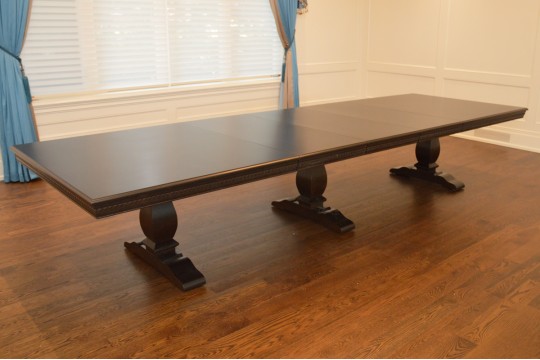Mennonite history and traditions-how this translated into skilled furniture builders
Even with all the contemporary, stylized furniture designs cropping up, Mennonite craftsmanship still manages to stand out centuries later; how so? The 1870 to 1880 migration of the Mennonite from different parts of Europe fostered a reputable woodworking legacy. Initially, Mennonites were known for their simple lifestyle, most taking up farming and woodworking as their livelihood. However, throughout the years, the Mennonite’s carpentry skills have drawn many, setting an indisputable standard for furniture makers. By taking a significant shift from only functionality, Mennonite furniture makers have re-established the craft- merging the traditional and modern furniture designs to breed sturdy, quality, hand-crafted wood additions with soul and character. But one thing remains, the superior carpentry of Mennonites today is rooted in their history and traditions and we are about to see how.
- Carpentry as a way of life
Nothing screams authenticity like furniture items built from scratch. Mennonite furniture originates from skilled craftsmen who have had years of carpentry skills passed down to them; it is a significant segment of their folk art. Furniture building comes naturally for Mennonites, each piece true to standard and complementary to any home design. A hand-crafted Queen Anne mahogany chest would be hard to miss in all of its classic glory.
- Grounding simplicity
Less is more! Mennonite’s traditions are founded on simplicity, and this quality seeps through every hand-crafted piece. A simple mission-style dining table design will undoubtedly blend in seamlessly with any décor and theme while giving undeniable character and balance to the room. Mennonite dining tables are trendy for their modest yet matchless appeal. The natural materials used in Mennonite furniture making are what sets apart simplicity from basic. Inlaid veneers and paint stains on a Walnut dining table are a definite eye-catcher.
- Passing of traditions
Mennonite pieces compound from solid wood, preferably hardwood, with great texture and grain. Additionally, the techniques and tools used for the craft are mostly hydraulic or pneumatic; this helps achieve the intricate handiwork characteristic of Mennonite furniture. Mennonite Craftsmen pay keen attention to the details opting to complete the finishing of the furniture pieces manually. Techniques like the mortise and tenon prominent with Mennonite guarantee a seamless fuse of the furniture while maintaining the impressive curves and straight cut of the furniture pieces.
- Durability rooted in their early works
In the beginning, Mennonite furniture stood for two main things; sturdiness and functionality, nothing more. With time they have added elements of decorations to their craft and however the first two elements hold ground even in their modern furniture. The materials sourced by artisans for Mennonite furniture sought to resist scrapes and dents over the years of service, not to mention the craft itself. Hand sanding and kiln drying the finished product are some of the Mennonite’s traditional practices of carpentry, which subsequently prevent the tear and wear of the masterpiece. The goal is to have any hand-crafted piece age gracefully. Mennonite pride themselves on quality woodwork worth each dime, so if it’s a cedar shaker crib you had your eyes on, brace yourself for a family heirloom.
Wrapping it up
Mennonite furniture has undeniably evolved over the years; however, the craft still maintains and borrows from the founding tradition. The materials and design for Mennonite furniture vary depending on taste, needs, and features. Mennonite furniture is nonetheless distinguishable- it is solid wood that attunes to personal preference. Buying pre-made furniture is limiting and boring. However, Mennonite furniture leaves wiggle room for choice and preference; whether it’s a four-seat breakfast table or an elegant twelve-seat dining table, Mennonite gives you the liberty to switch up based on the functionality, design, and preference. Besides, what’s a better way to bring out your personality than hand-crafted cabinetry?

